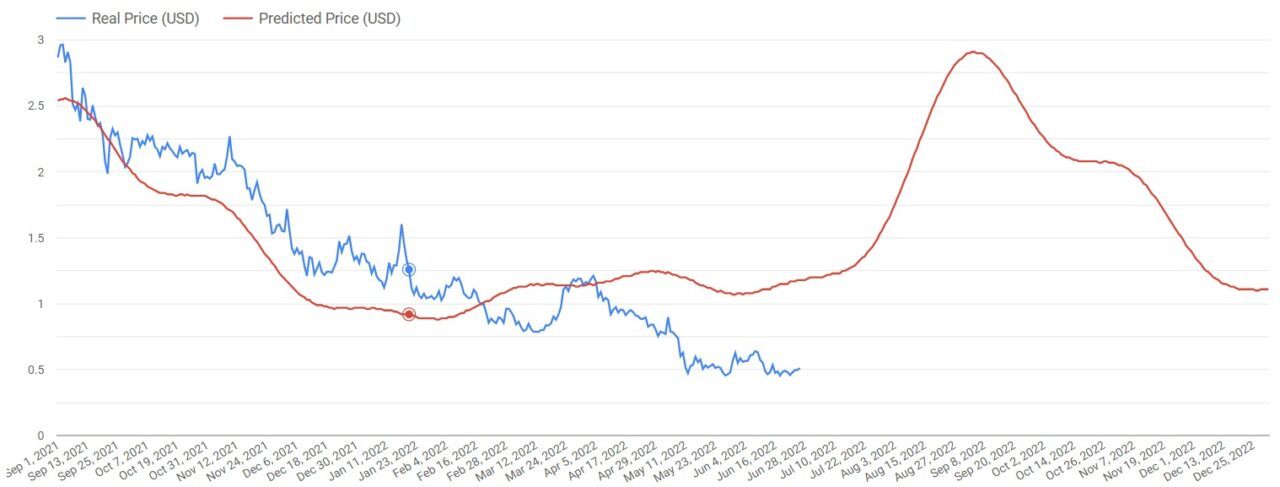An artificial intelligence-based price prediction model is suggesting that the price of Cardano’s native token $ADA is going to surge to trade at $2.9 by September of this year, representing a 530% increase from the cryptocurrency’s current price.
According to NeuralProphet’s PyTorch-based price prediction algorithm, which uses an open-source machine learning framework, Cardano’s price could surge to $2.9 by September, before plunging to end the year trading at around $1.11. The $1.11 mark, it’s worth noting, still represents a 140% rise from ADA’s current $0.46 price tag.

The price prediction model, first reported by Finbold, uses data from 2017 and AI technology to determine where the cryptocurrency’s price is growing. The mode delivered somewhat accurate predictions from February 2021 until May 2022, when the Terra ecosystem collapsed and the crypto market entered a bear market.
In comparison, the cryptocurrency community has, through CoinMarketCap, predicted that ADA will trade at $0.78 by the end of August, and at $0.457 at the end of the year. The community’s near-term bullishness is likely related to the network’s upcoming Vasil hard fork.
The hard fork is expected to deliver a “massive performance improvement” to the cryptocurrency’s network. The hard fork is a major upgrade that will involve four Cardano Improvement Proposals (CIPs). IT was delayed until later this month as the team behind it decided to be extra cautious after Terra collapsed.
As CryptoGlobe reported, development activity on the Cardano network, which tracks “the number of GitHub events that the project organization generated” has surpassed that of other major cryptocurrencies, including Ethereum ($ETH) and Solana ($SOL).
Institutional investors have, over the past week, been betting on ADA and ETH, which along with cryptocurrency investment products shorting BTC saw positive inflows. These inflows came during a week in which digital asset investment products saw outflows totaling $423 million, the largest since records began “by a wide margin.”
Image Credit
Featured image via Unsplash









